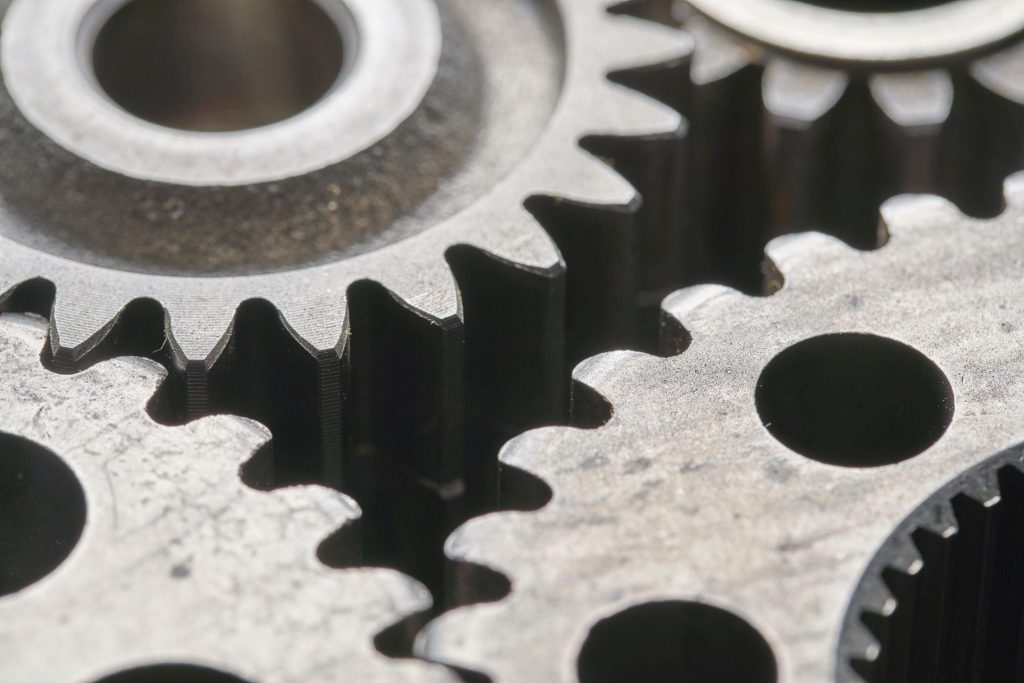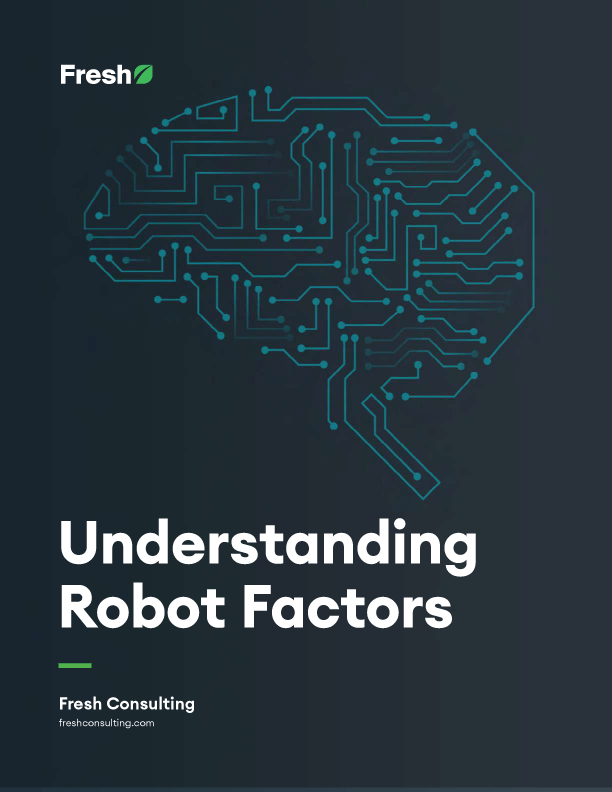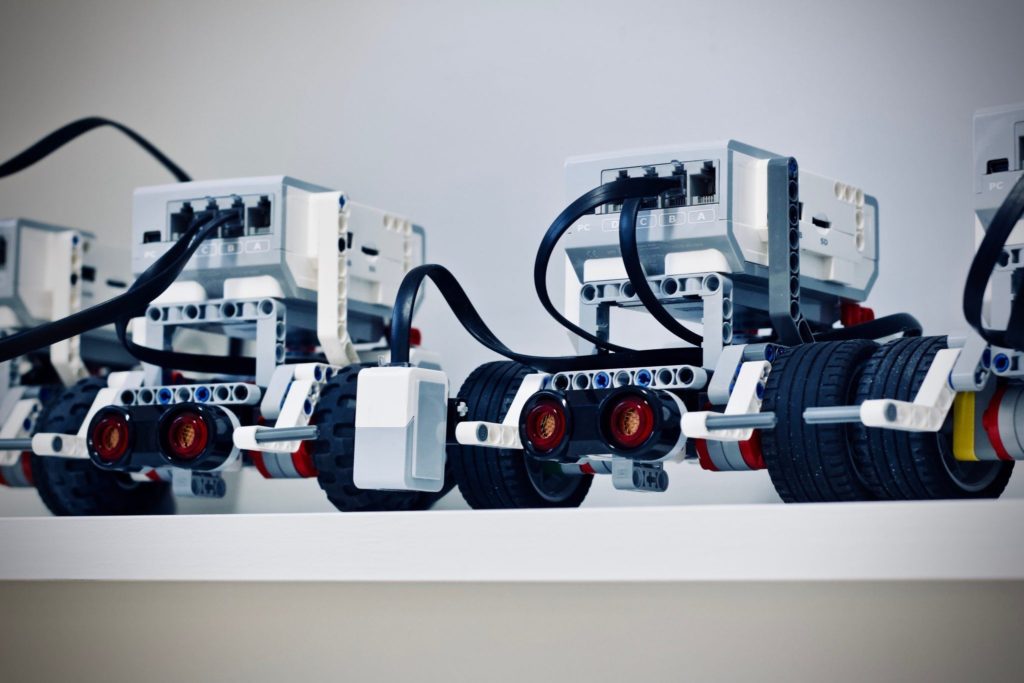Article
How Robots Complement Us in the Workplace

Humans and robots will likely work side by side in the future.
Even though forecasts of our working future are currently clouded by fear of human obsolescence, human skills will still remain in demand. But it will become more important how those uniquely-human skills apply when working in human-machine teams.
Keep reading to learn about different situations when humans or robots might excel more fully:
How We Excel
We’re Highly Creative
From creating detailed marketing plans to expertly designing a new architectural wonder, humans are masters of creativity. Such accomplishments are challenging to recreate in another being, and humans are the best candidates for work in the arts, writing, humanities, and other topics relating to the human condition.
Our Brains Are Complex
Complex neural networks allow human brains to make associations, learn and adapt, interpret information, and take part in advanced cognitive analysis. Scientists are figuring out ways to mimic human neural networks, but humans still have the upper hand on abstract problem-solving, analysis, and drawing connections between disparate ideas.
We Drive Strategy
For the foreseeable future, humans will be the ones driving strategy and creating new ideas for the advancement of businesses. Whether companies need to refine their mission, create more streamlined business processes, or better manage marketing projects, humans will lead the vision. Humans are equipped to ask “why” and create ways to answer the question—without this valuable skill, businesses would not be able to move forward.
We Can Handle the Unexpected
The human brain can learn new things based on experience, so while an action could initially lead to a mistake, errors decrease as humans interact more with a task. Tasks take us progressively less energy as we continue to perform them. This experience helps us when we handle the unexpected.
We Are Dexterous
For years, scientists have struggled to make a robot that can mimic the dexterity of human fingers. The rate at which humans can type, handle objects, or move items is unparalleled. Managers must consider the limitations of robots before placing them into any task that requires many degrees of freedom in the arm.
We Are Empathetic and Sociable
One of the greatest advantages that humans have over robots is the ability to feel empathy and react with emotional intelligence. We can read the face of another human to tell if they are happy or sad. This means a salesperson can augment a sales pitch based on the reaction of the customer, asking a follow-up question based on the pitch of an answer.
Natural Human Limitations
Naturally, We Get Tired
Unlike robots, humans have a limit to their cognitive processing and physical strength. As the day wears on, humans become tired, mentally and physically. This contributes to human mistakes and natural decreases in efficiency.
Emotional Fluctuations Are Real and Unpredictable
Human emotion can have a negative impact on work quality and overall performance. Feelings of boredom, anger, frustration, and many other unpleasant emotions can disrupt a workday. This is something supervisors must make a point of managing.
At Times, We’re Irrational
Just as our interpretive skills can be an asset in the right situation, they can also become a hindrance. There are many times when emotion can cloud judgment, causing us to make a decision that is not based on fact. This can lead to costly business mistakes and potentially unsafe situations.
We Rely on Limited Memory
We tend to remember things that are significant to us, but our memorization skills cannot match the recall abilities of a computer processor. Robots are programmed to retrieve information reliably and quickly, while we’re much slower at recalling information and making sense of it.
We Don’t Handle Repetition Well
It is easy for us to become bored when we are not given the opportunity to do something exciting or challenging. Robots do not have the cognitive ability to become bored or frustrated with a mundane task.
We Are Physically Sensitive to Our Work Environment
Humans can’t handle extreme situations that involve loud sounds, bright lights and extreme temperatures—here, robots thrive. They are not victims of the elements and can work in a stationary position in the coldest winter or hottest summer. For companies who handle outdoor work, a robot could be a year-round asset.
How Robots Complement Us
Robots Can Work Longer
While humans have a mental and physical limit to how long they can work, robots can continuously accomplish tasks around the clock. This increases productivity since companies can have robots work on routine and mundane tasks well past the average workday hours.
They Are Less Fragile
Robots can pick up materials that humans don’t have the physical capacity to lift on their own. This keeps companies from having to rent machinery by the hour to lift materials, and it also prevents possible injuries that could occur when the limits of staff are tested.
Example: Kuka Heavy Duty Robot of RobotWorx.
They Come in Many Sizes
Whether it be fighting disease in the human body or constructing a building, the applications of this feature are diverse. The size of the robot will often determine its function and make it a lot easier to accomplish specific tasks that would be challenging for humans to finish alone.
They Are Incredibly Flexible Workers
Newer robotic models come with software that lets users reprogram them to accomplish many different tasks. There is no longer a need to have multiple robots that only work on a small set of problems. Their work process is also scalable; you can develop the software for working a robot and then use the same software to quickly retrain any number of robots.
They Are Inexpensive for Routine Tasks
Having a human do simple, routine tasks does not make sense when a company can train a robot once and have it do repetitive tasks indefinitely. Of course, the initial setup cost of buying and training the robot should be taken into account. But businesses will see greater returns the longer the robot is employed.
Example: Amazon has saved roughly 20 percent of their operating expenses.
They Are Exact and Logical
Robots can be programmed to move and operate with such precision that they eliminate common human errors from the work environment. Robots aren’t likely to forget information, they do not need to hear task instructions multiple times, and ego doesn’t affect their work.
They Can Be Destroyed
While this may seem like an unfortunate outcome, the fact that robots can freely be destroyed is a good thing. It means they can be put in hazardous or experimental situations that they may not make it out of; this freedom could lead to faster innovation and discovery.
Example: Robots were sent to help with the cleanup efforts in Fukushima, Japan after an earthquake.
Wrap Up
To maximize our relevancy and potential in the workplace, we need to capitalize on jobs that require human creativity, cognition, and emotional intelligence. This means preparing ourselves to embrace a future where we deeply understand the strengths and weaknesses of robots as well as our own.









